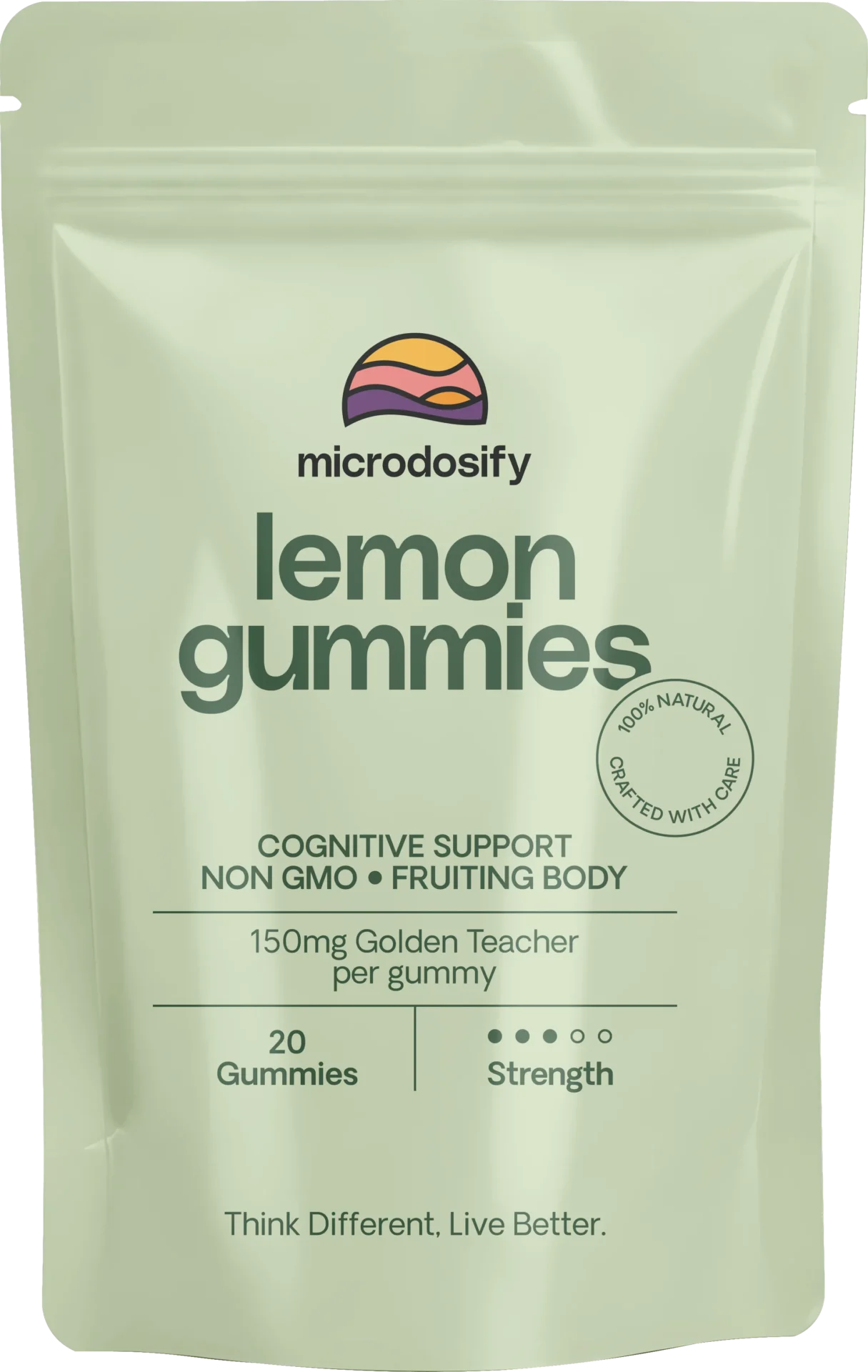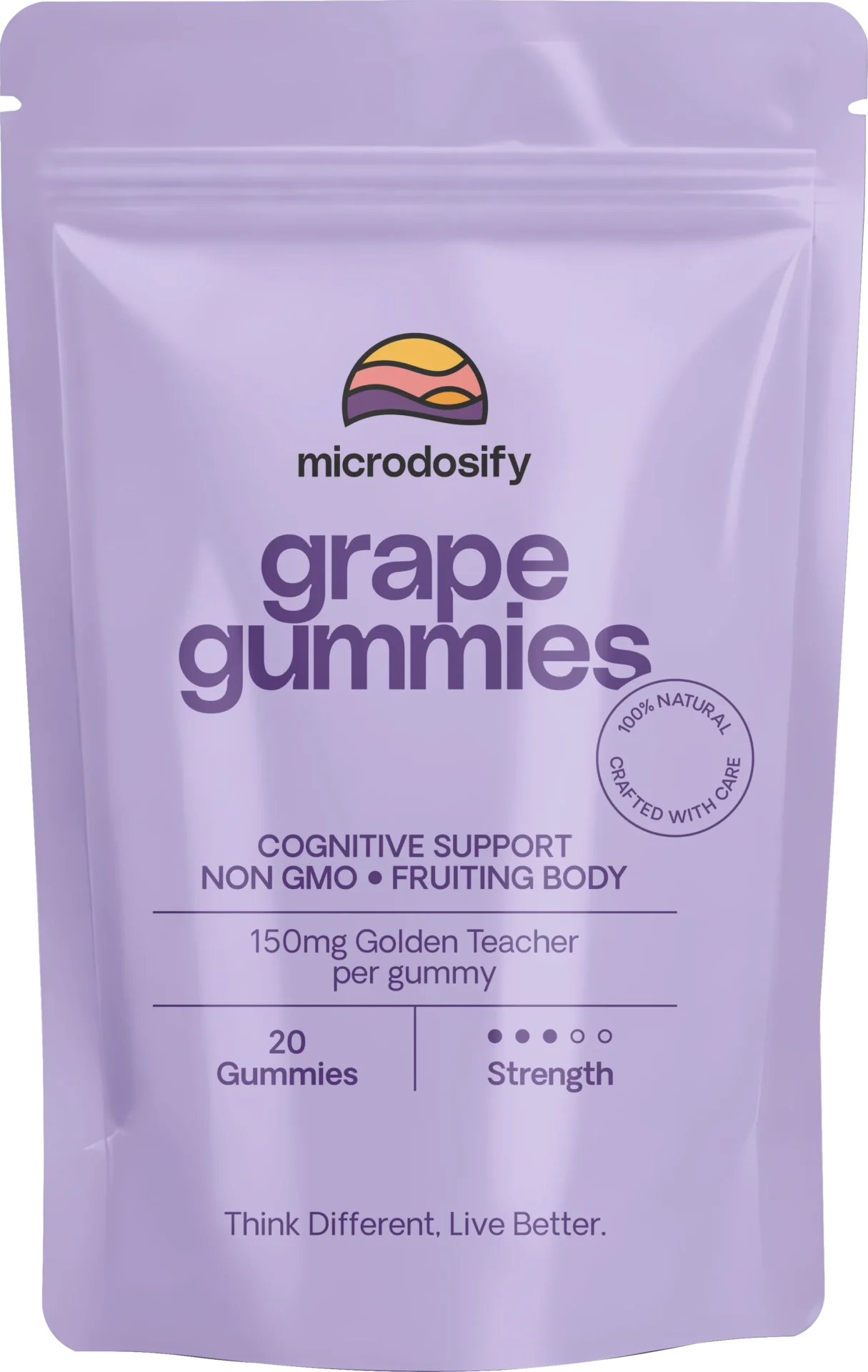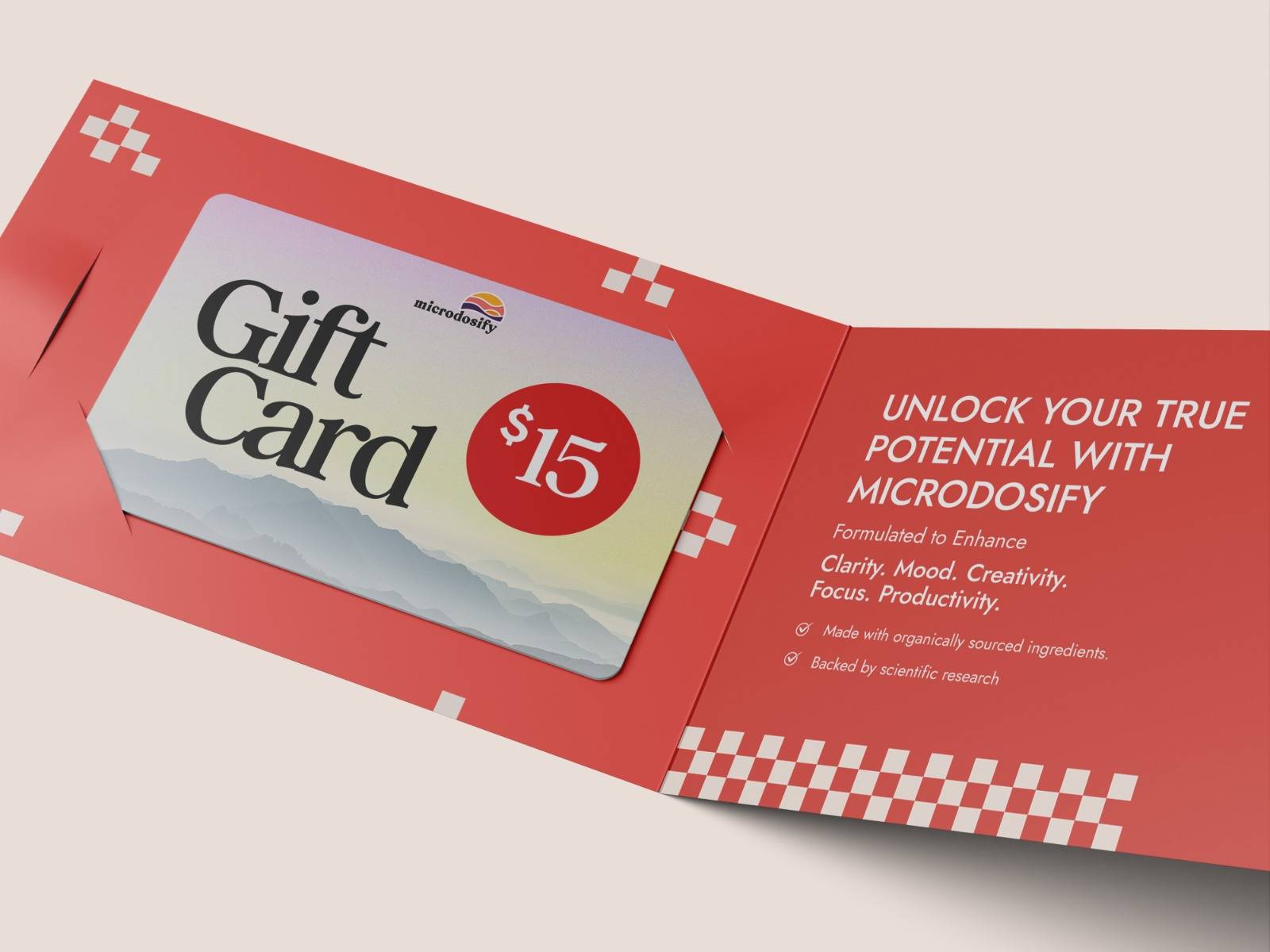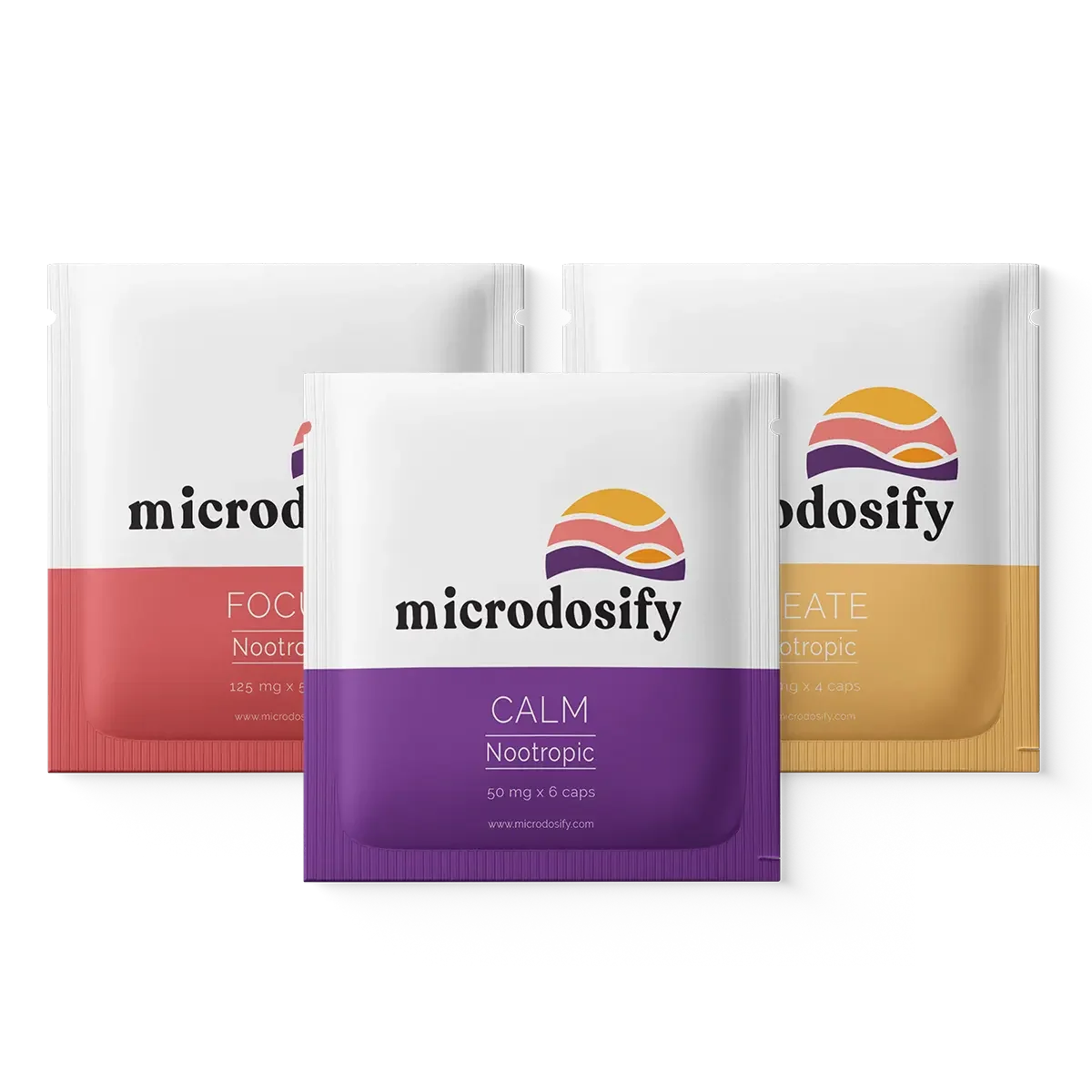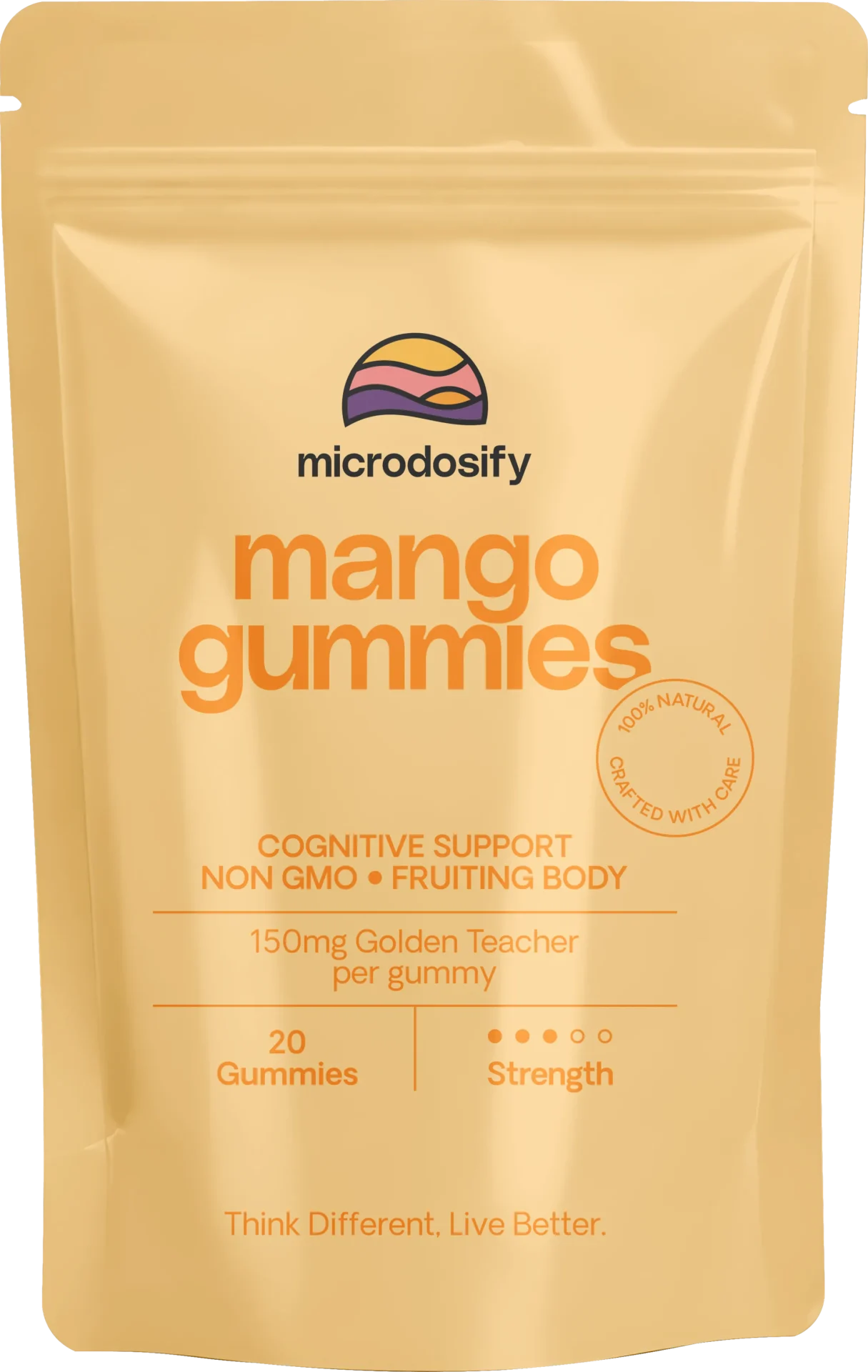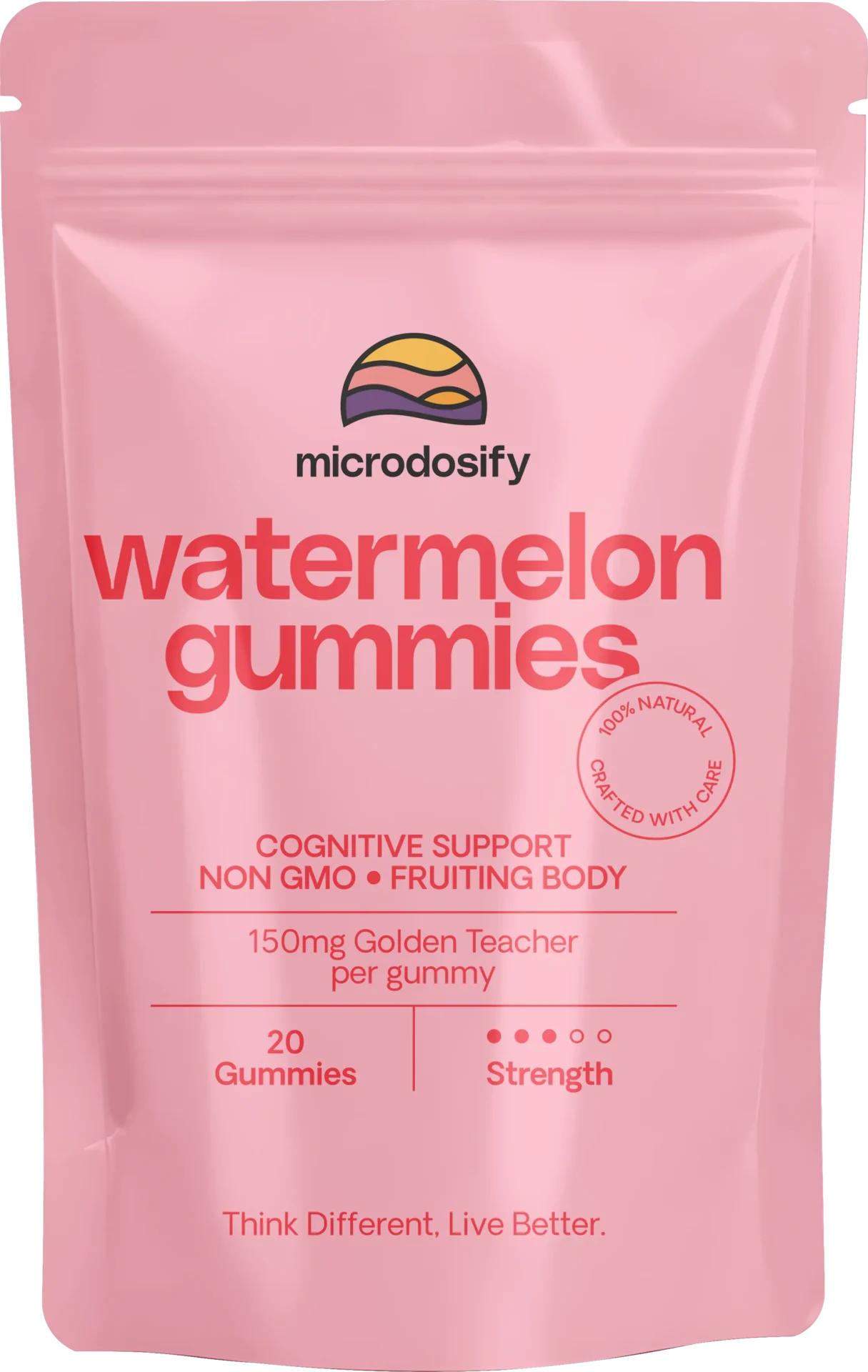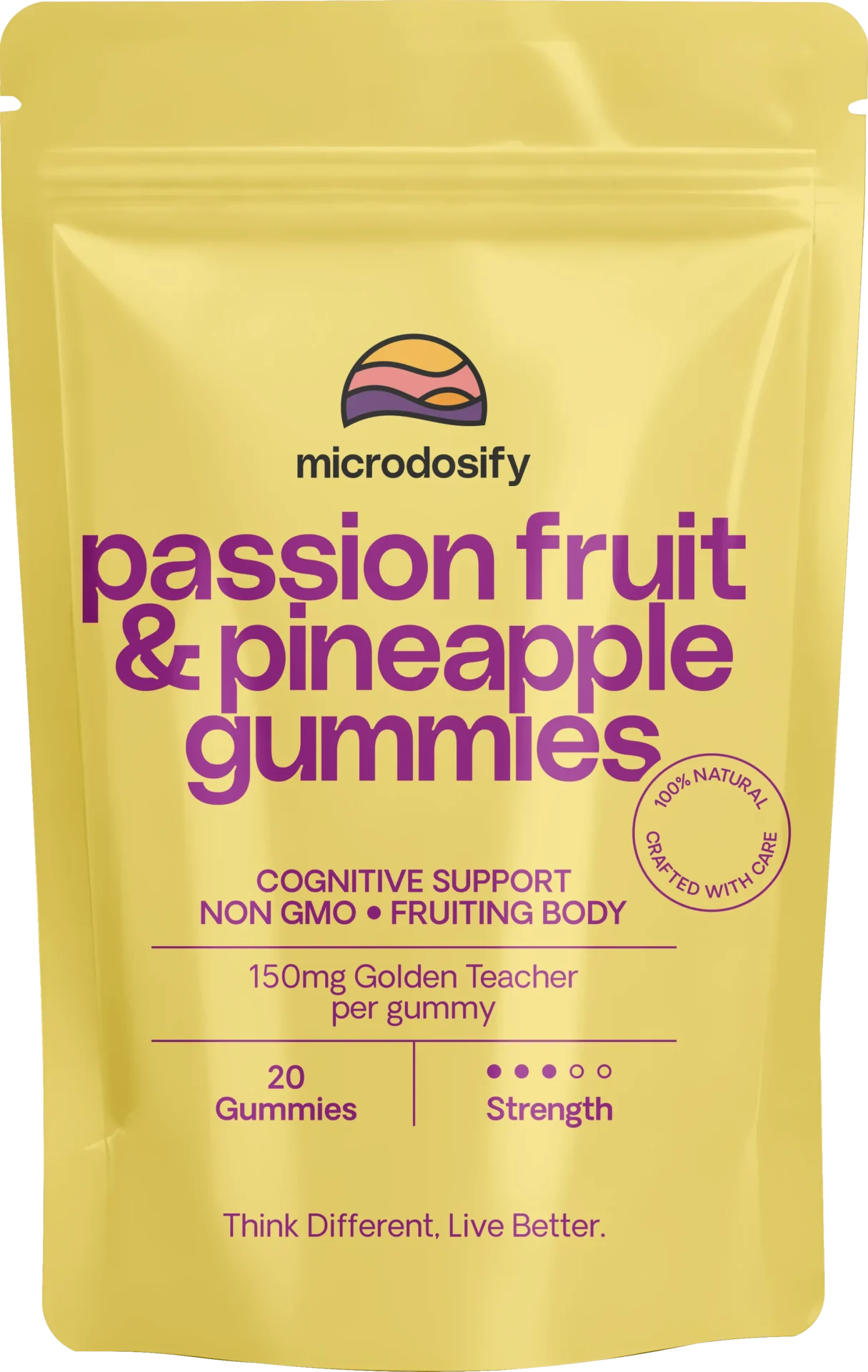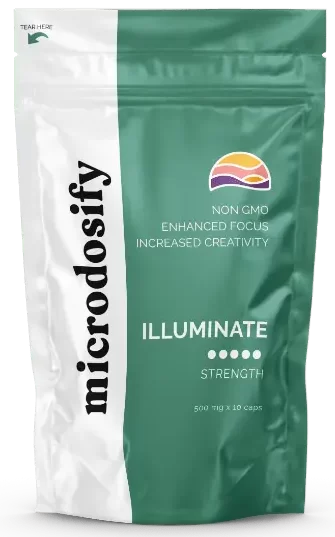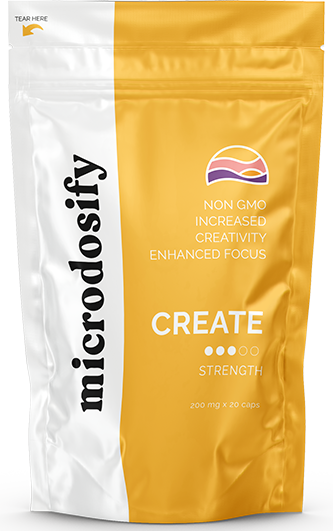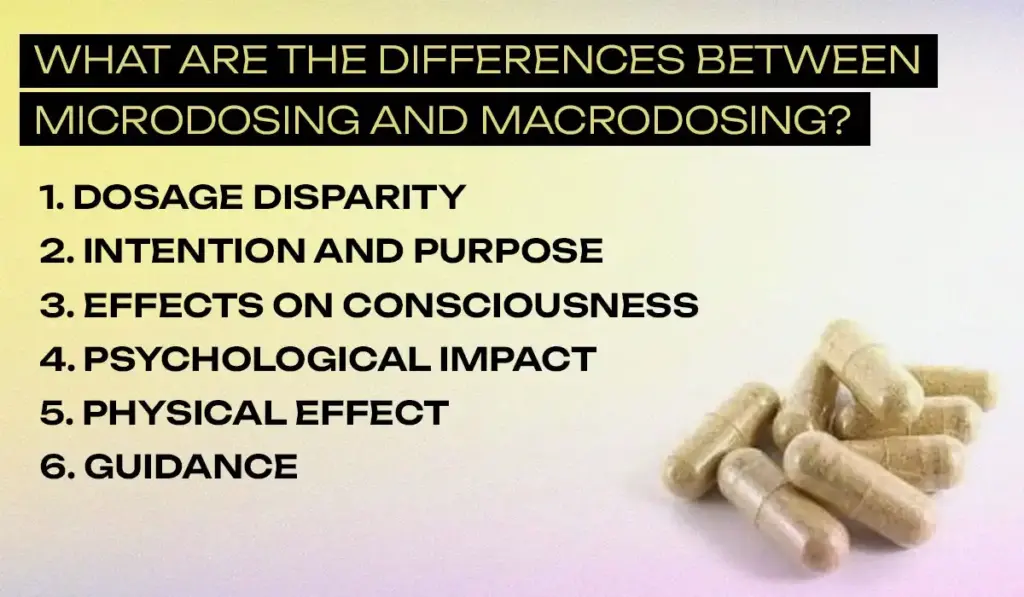In recent years, the practices of microdosing and macrodosing have gained traction as people explore the therapeutic potential of psychedelics.
This article explains the differences between microdosing—using sub-perceptual amounts of substances like psilocybin—and macrodosing, which involves larger doses for deeper experiences.
We will explore the benefits and side effects of both approaches, helping you determine which best suits your personal journey toward healing and self-discovery.
Key Takeaways:
- Microdosing involves taking small amounts of psychedelics regularly, while macrodosing involves taking a bigger, single dose.
- Microdosing is typically used for therapeutic purposes, while macrodosing is used for more intense psychedelic experiences.
- The decision between microdosing and macrodosing should be based on individual needs and preferences and careful consideration of potential side effects.
What is Microdosing?
Microdosing is a therapeutic practice involving the use of sub-perceptual doses of psychedelic substances, such as psilocybin mushrooms, to enhance mental well-being without the intense experiences associated with macrodosing.
This community-driven approach supports individuals in exploring their mental health and emotional balance, offering a more subtle yet transformative way to engage with psychedelics for personal growth and healing.
What Substances Are Used for Microdosing?
Microdosing primarily involves substances like psilocybin mushrooms and LSD, which are chosen for their therapeutic potential without inducing significant psychedelic effects.
These substances boost creativity, improve focus, and elevate mood, making them good options for people seeking mental clarity and emotional balance.
For example, psilocybin mushrooms, derived from various species of fungi, contain the active compound psilocin, which interacts with serotonin receptors in the brain.
Similarly, LSD, a potent synthetic compound, is known for its impact on perception and thought processes.
Both options are carefully dosed to provide benefits without the overwhelming experiences typically associated with full psychedelic doses.
- Psilocybin Mushrooms: Originating from nature
- LSD: A man-made substance
The preference for these substances in microdosing therapy lies in their relatively low risk of adverse effects, combined with their promise of mental enhancement and emotional resilience.
How is Microdosing Different from Regular Dosing?
The difference between microdosing and regular dosing is in the amount consumed; microdosing typically involves taking a fraction of the typical psychedelic dose, allowing users to experience subtle cognitive and emotional benefits without the intense effects associated with macrodosing.
These subtle effects are essential, as microdosing often aims at improving daily functioning, mood stability, and creativity without leading to significant alterations in perception.
Macrodosing refers to taking a full dose that can induce profound alterations in consciousness and intense psychedelic experiences, which may include visual and auditory hallucinations.
While microdosing is often considered a tool for self-improvement and mental health care, macrodosing can serve as a trigger for profound emotional healing and spiritual exploration.
Both approaches hold distinct therapeutic potentials, contributing to ongoing conversations in psychology and the creative arts.
What is Macrodosing?
Macrodosing refers to the practice of consuming a larger, often full therapeutic dose of psychedelics, such as psilocybin mushrooms, or LSD, to induce profound and transformative experiences that can lead to significant emotional and spiritual insights, commonly referred to as a ‘hero dose’, this practice is often used in therapeutic settings for deep psychological exploration and healing.
What Substances Are Used for Macrodosing?
Common substances used for macrodosing include psilocybin mushrooms and LSD, which are chosen for their strong psychedelic effects that facilitate deep introspection and emotional breakthroughs, often taken in significant quantities. The profound nature of these substances often leads to remarkable shifts in perception, helping individuals confront personal issues and past traumas. Information on dosages is critical for safety and effectiveness; for instance, a common dose of psilocybin ranges from 2 to 5 grams of dried mushrooms, while LSD is typically consumed in doses of 100 to 300 micrograms. Each psychedelic can induce unique experiences:
- Psilocybin: Users might experience enhanced colors, patterns, and emotional instability, leading to insightful realizations.
- LSD: The effects generally last longer, creating a heightened sense of connection to the universe and deeper self-awareness.
Understanding these substances’ effects and respective dosages can guide individuals in their macrodosing journeys toward achieving desired therapeutic goals.
How is Macrodosing Different from Regular Dosing?
Macrodosing differs from regular dosing primarily in quantity consumed; while regular dosing may involve moderate amounts of a substance, macro dosing involves taking a significant dose that results in intense psychedelic experiences, often leading to profound personal and therapeutic insights. Essentially, the distinction boils down to the extent of the journey one undertakes. Regular dosing facilitates a more subdued experience, perhaps enhancing creativity or promoting mild relaxation, whereas macrodosing encourages transformative experiences that can challenge the psyche and reveal deeper emotional truths. During macrodosing, users often report a heightened state of awareness, allowing for connections with personal trauma or unresolved feelings: Consequently, while each approach carries its own risks and rewards, macrodosing allows for unparalleled exploration of self, paving the way for exceptional mental health advancements.
Benefits of Microdosing
Microdosing offers a range of benefits that can enhance mental health and overall well-being, including improved mood, increased focus, and enhanced creativity, making it an appealing option for those seeking therapeutic interventions without the overwhelming effects typical of macrodosing.
Improved Mood and Mental Well-being
One of the primary benefits of microdosing is the noticeable improvement in mood and mental well-being, as users often report feeling more positive, motivated, and emotionally balanced. This subtle yet impactful approach can lead to profound changes in one’s daily life. Individuals find that microdosing helps reduce symptoms of anxiety and depression, providing them a sense of clarity and emotional resilience. For instance, a participant in a recent study noted that after integrating microdoses into their routine, they experienced fewer mood swings and felt more engaged with loved ones. Notably, research conducted by experts in psychopharmacology supports these claims, with findings indicating enhanced emotional regulation and cognitive flexibility:
- Microdosing’s Impact: Users frequently describe heightened creativity, decreased levels of stress, and an overall surge in a positive outlook.
- Therapeutic Implications: Medical professionals are now exploring the potential of microdosing in treating various mental health conditions, expanding its applications.
The anecdotal and scientific evidence aligning suggests a promising future for microdosing as a viable tool in improving emotional well-being.
Increased Focus and Creativity
Microdosing is also known to enhance focus and creativity, allowing individuals to think more expansively and solve problems more clearly during their daily activities. Numerous studies suggest that microdosing may facilitate deeper cognitive processes, paving the way for innovative ideas and improved productivity. Individuals who participate in this practice often report experiencing heightened awareness, enabling them to navigate complex tasks with ease. For instance, research indicated that a small dose of psychedelics could enhance neuronal connectivity, promoting creative thinking and breaking down mental barriers.
- In a study conducted by researchers at the University of Sydney, participants engaging in microdosing demonstrated sharper focus and enhanced problem-solving skills.
- Another example from Johns Hopkins University highlighted how participants reported increased emotional resilience and adaptability in their thought processes.
These findings collectively point to microdosing not merely as a trend, but rather as a promising avenue for fostering cognitive enhancement in therapeutic contexts.
Enhanced Spiritual and Emotional Insights
Users of microdosing often report enhanced spiritual and emotional insights, which can lead to greater self-awareness and personal growth, making it a powerful tool for therapy and self-exploration. Many individuals have found that microdosing sparks creativity and fosters a deeper understanding of their feelings, helping them connect with their inner selves. These subtle experiences can create pathways for emotional healing, allowing users to confront past traumas and address lingering issues in a safe environment. As personal growth unfolds, one often becomes more attuned to the complexities of their spiritual journey, embracing the lessons derived from these transformative experiences.
Benefits of Macrodosing
Macrodosing can provide profound benefits, often including intense psychedelic experiences that facilitate therapeutic breakthroughs and deep emotional healing, making it a compelling option for those on a quest for significant personal transformation.
Intense Psychedelic Experience
One of the main benefits of macrodosing is the intense psychedelic experience it offers, allowing users to explore the depths of their consciousness and gain insights that can lead to profound emotional and spiritual growth. This psychedelic journey is often marked by vivid hallucinations, altered perceptions of time, and an overwhelming sense of connection to the universe. As individuals immerse themselves in this altered state, they frequently confront personal demons, unresolved trauma, and deep-seated fears. This confrontation can be uncomfortable, but it is also incredibly valuable; when managed in a safe environment, these experiences can catalyze significant emotional breakthroughs. Participants often report a heightened sense of empathy for others and themselves as they navigate through these visions. The insights collected during macro dosing can lead to lasting changes in perspective, enabling a more compassionate worldview. Ultimately, integrating these experiences into daily life may contribute to improved mental health and well-being.
Potential for Therapeutic Breakthroughs
Macrodosing has the potential to facilitate therapeutic breakthroughs, as profound experiences can help individuals confront deep-seated issues and catalyze significant healing. The psychological mechanisms at play during these experiences are complex and can lead to heightened awareness. During sessions, individuals often experience a shift in perception, allowing them to process emotions and thoughts that have long been buried. This transformative journey may lead to several types of healing, such as:
- Emotional release: Many report a cathartic experience that enables them to release feelings of shame, guilt, or fear.
- Enhanced introspection: Deep reflection often fosters a greater understanding of oneself, which can manifest as self-acceptance and clarity.
- Connection with others: A shared experience can strengthen bonds with peers or therapists, making the healing process more effective.
In essence, through macrodosing, individuals can tap into their consciousness, paving the way for profound emotional and psychological healing that was once thought unattainable.
Spiritual and Emotional Growth
Macrodosing often results in significant spiritual and emotional growth, as individuals report transformative experiences that reshape their understanding of themselves and their place in the world. This profound journey can lead to enhanced self-awareness and give individuals the power to confront their fears and rediscover their true essence. Many who engage in macro dosing have shared stories of newfound clarity and purpose, feeling as if they have tapped into a deeper consciousness. For instance, during a macrodose experience, one participant mentioned a vivid encounter with their younger self, which allowed them to heal old wounds and embrace unconditional love. Research has highlighted the neuroplasticity induced by these experiences, suggesting they can foster lasting emotional resilience. As individuals embark on this journey, the ripple effects of their realizations can lead to improved relationships and a more profound sense of community.
Side Effects of Microdosing and Macrodosing
While microdosing and macrodosing both offer potential benefits, they can also lead to side effects that users should be aware of, including physical discomfort or psychological distress, which can vary based on individual tolerance and the substances used.
Physical Side Effects
Physical side effects of microdosing and macrodosing can include nausea, discomfort, and other bodily responses that may arise due to the intake of psychedelic substances. Understanding the spectrum of effects is essential for anyone exploring these practices. While some individuals may find that microdosing provides a sense of enhanced focus or creativity, the reality is that it can also lead to unexpected reactions. On the other hand, macrodosing, where larger amounts are consumed, can often manifest more intense physical responses. It becomes crucial to be observant for signs such as:
- Increased heart rate
- Changes in temperature regulation
- Gastrointestinal issues
Being cautious to how the body responds not only maximizes the benefits but also minimizes potential discomfort. Users should approach their experiences with a sense of mindfulness and a commitment to responsible dosing practices.
Psychological Side Effects
Users of both microdosing and macrodosing may experience psychological side effects, such as anxiety or emotional distress, which can be exacerbated by the intensity of the psychedelic experience. These effects can vary widely among individuals, influenced by factors such as dosage, personal mental health history, and the environment in which the substances are consumed. For some, the transformative potential of psychedelics can lead to insights and clarity, while for others, it may unlock deeply buried traumas or exacerbate existing conditions like anxiety disorders. Strategies such as preparation, setting a positive mindset, and ensuring a safe environment can be crucial for mitigating adverse effects.
- Creating a calming space
- Having a trusted guide or sitter
- Employing mindfulness techniques
Individuals are encouraged to remain fully aware of their mental health and to seek professional advice if feelings of distress become overwhelming during their experiences.
Which One is Right for You?
Determining whether microdosing or macrodosing is suitable for you involves considering a variety of factors, such as your individual needs, goals, and the therapeutic outcomes you hope to achieve through these psychedelic practices. Get 1:1 consultation for your microdosing journey here: Microdosing Coaching
Factors to Consider when Choosing Between Microdosing and Macrodosing
When choosing between microdosing and macrodosing, it’s essential to consider factors such as your mental health goals, the desired intensity of experience, and your readiness to engage with the therapeutic aspects of psychedelics. Individuals should assess their personal history with psychedelics, including any past experiences or sensitivities that might influence their journey. It’s also crucial to consider the doses’ duration and frequency, as both approaches have unique routines that can impact daily life.
- Microdosing typically involves taking sub-perceptual doses on a regular schedule, often leading to subtle enhancements in mood and creativity with minimal disruption.
- Macrodosing, on the other hand, is associated with deeper, more profound experiences that can facilitate significant insights but may require a significant time commitment for integration.
Aligning the chosen method with one’s overall lifestyle, support systems, and readiness for self-exploration plays a critical role in ensuring a safe and beneficial psychedelic experience.
Frequently Asked Questions
What is the difference between microdosing and macrodosing?
Microdosing and macrodosing refer to two different methods of consuming psychedelics. Microdosing involves taking small, sub-perceptual doses of psychedelics, while macrodosing involves taking a full, standard dose. Understanding their differences is essential for safe use and minimizing potentially undesired side effects.
| Effects | Microdosing | Macrodosing |
| Mental Health Effects | Minor improvements in mood and anxiety. Improved well-being and emotional stability. | Therapeutic potential for severe mental health issues, especially when used in a controlled setting with a qualified therapist Reduced depression. |
| Cognitive Changes | Greater creativity, focus and productivity. | Significant changes in perception and cognition. Profound self-discovery and brighter ideas. |
| Spiritual Experiences | Slightly enhanced spiritual awareness and connection. A more profound sense of harmony and peacefulness supports gradual spiritual growth. | Life-changing experiences and a refreshed feeling of purpose. Considerable increases in existential well-being. |
| Potential Risks | Low risks, with few known adverse effects. | Anxiety, disorientation, and, rarely, long-term psychological discomfort. |
What are the benefits of microdosing compared to macrodosing?
Microdosing is believed to have a range of benefits, including increased creativity, improved mood, and enhanced focus. Unlike macrodosing, microdosing doesn’t result in a full-blown psychedelic experience, making it more suitable for daily use.
Is microdosing safer than macrodosing?
Both microdosing and macrodosing carry potential risks and should be approached with caution. However, because microdosing involves taking smaller doses, it may be considered slightly safer than macrodosing. It is still important to do thorough research and consult with a healthcare professional before trying either method.
Can I still experience a psychedelic trip with microdosing?
No, microdosing is not intended to produce a full-blown psychedelic experience. The doses are too small to induce a trip, and the effects are often sub-perceptual. Microdosing is meant to be a subtle and controlled experience, unlike macrodosing, which can result in intense hallucinations and altered states of consciousness.
What is the recommended dosing schedule for microdosing?
The recommended schedule for microdosing varies, but a common approach is to take a small dose every 2-3 days for a period of several weeks. This allows for the body to have time to reset and avoid building a tolerance to the substance.
Are there any potential side effects of microdosing and macrodosing?
Both microdosing and macrodosing can potentially have side effects, including increased heart rate, changes in mood, and altered perception. It is important to start with low doses and pay attention to any changes in your body or mental state. If you experience any concerning side effects, it is recommended to stop the practice and seek medical advice.



